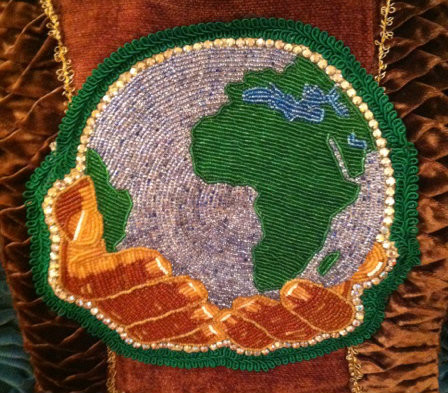
This Earth Day, the well-being of “people, place, and planet” takes on new meaning as global leaders sign the United Nations Paris Climate Agreement reached last December, and philanthropy and environmental organizations in the United States take steps to move diversity, equity, and inclusion priorities forward.
The way we seek environmental solutions is evolving, and we are making progress as a result. Part of the success of the Paris Summit was a deeper level of collaboration, partnership, and leadership among a historic number of nations both directly impacted by climate change and significant engagement by those with the biggest footprints. The dialogue went beyond the nations historically involved to include China, India, and the Marshall Islands. It also included grassroots organizers, indigenous activists, and diverse youth representatives from across the world. Since 2014, some of the largest environmental organizations and grassroots organizations have engaged in new and deeper collaborations, resulting in efforts such as the successful People’s Climate March of 2014 and 2015.
Despite this momentum, philanthropy and the field have a long way to go when it comes to diversity—an issue that we believe stands in the way of the environmental movement’s overall effectiveness. Grassroots organizations remain underfunded, and philanthropy has yet to catch up with demographic shifts. Data from the Council on Foundations, for example, released just last week shows that 36 percent of the US population is comprised of racial and ethnic minorities, but at the governance level, just 16 percent of foundation board members are considered racial and ethnic minorities. At the staff level, just 24 percent of full-time grantmaker employees are members of racial and ethnic minorities. Further, the persistent underrepresentation of women is reflected in the fact that they hold only 31 percent of the CEO positions in the largest foundations (those with more than $1 billion in assets), and only 41 percent of all surveyed foundation board members are women.
Change has been slow, but some groups and individuals are pointing the way forward. The Meyer Memorial Trust, for example, has taken multiple steps to make its own institution, staffing, and grantmaking more racially diverse. And this week, six planet-protecting heroes received a Goldman Environmental Prize. One of them—a 20-year-young activist from Baltimore named Destiny Watford—embodies the positive and needed change underway. Watford organized with her community in old-school style, but built an important new coalition of allies to fight the installation of a toxic incinerator less than a mile from her school, and she is now forging ahead to shift that space from trash to solar power for her community. She represents the future of the environmental movement and has a lot to teach us—not only about creating winning strategies in environmental philanthropy, but also what a model for more inclusive leadership looks like.
Are you enjoying this article? Read more like this, plus SSIR's full archive of content, when you subscribe.
It is with this awareness that The University of Michigan School of Natural Resources and Environment (SNRE) and The Environmental Grantmakers Association (EGA) are partnering to create a pipeline of diverse leaders for the future, both within and beyond grantmaking. Our new Environmental Fellows Program (EFP) will place 17, graduate-level, paid environmental fellows who want to pursue careers in the environmental field at foundations and NGOs across the country, where they will gain hands-on opportunities and work experience, and increase their awareness of the opportunity to work in philanthropy. We also aim to reduce the barriers to entry for mid-level and senior-level jobs in environmental organizations for professionals of underrepresented backgrounds by connecting them to mentors and giving them experience they can point to when seeking careers in these fields.
We formed the EFP because we recognized that environmental organizations lack racial, ethnic, and class diversity, and saw a growing commitment within our community to enhance institutional diversity in the environmental domain. Outstanding students from across the nation have already been accepted to work at a variety of offices of both EGA member-foundations and their NGO grantees this summer, and all will come to the EGA Retreat this fall to network and engage with the funder community. We designed this program to embody the change we want to see—a change that not only influences shifts in funding, but also builds bridges that grow and evolve institutional notions of who grantmakers and changemakers are.
EGA has also committed to sharing data through the Guidestar Initiative, partnering with D5, and sharing our own Tracking the Field report on where the grants go. Meanwhile, SNRE is launching an exciting undergraduate diversity program called The Doris Duke Conservation Scholars Program (DDCSP)—a two-year research and internship program that will bring 20 undergraduates from all over the country to the University of Michigan in the first year, and 40 in succeeding years, to participate in scientific research projects or intern with local environmental organizations.
These and other efforts are encouraging, but they are just the beginning. If we are to truly protect our planet, we need more and deeper commitments from funders to foster the next generation of environmental changemakers.
Support SSIR’s coverage of cross-sector solutions to global challenges.
Help us further the reach of innovative ideas. Donate today.
Read more stories by Dorceta Taylor & Rachel Leon.

